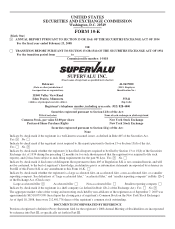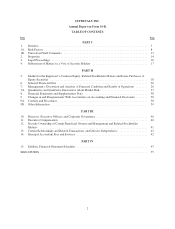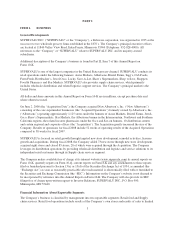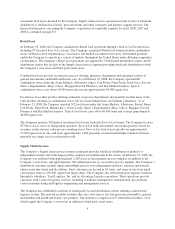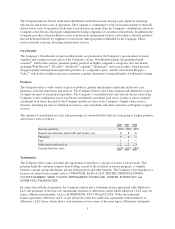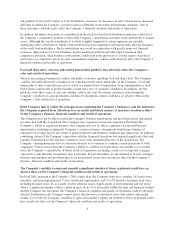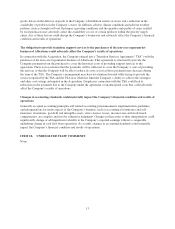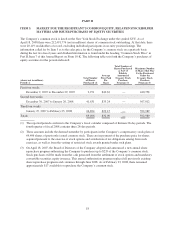Albertsons 2008 Annual Report Download - page 16
Download and view the complete annual report
Please find page 16 of the 2008 Albertsons annual report below. You can navigate through the pages in the report by either clicking on the pages listed below, or by using the keyword search tool below to find specific information within the annual report.The Company’s substantial indebtedness and lower credit rating could increase the Company’s borrowing
costs, decrease the Company’s business flexibility and adversely affect the Company’s financial condition
and results of operations.
The Company has, and expects to continue to have, a substantial amount of debt and a significantly lower debt
coverage ratio as compared to what the Company had before the Acquisition. In addition, as a result of the
Acquisition, the Company’s debt no longer has an investment-grade rating.
The Company’s level of indebtedness and the reduction of the its credit rating could have important
consequences to the operation of its businesses and could increase its vulnerability to general adverse economic
conditions. For example, they may:
• require the Company to use a substantial portion of its cash flow from operations for the payment of
principal of, and interest on, its indebtedness, thereby reducing the availability of the Company’s cash
flow to fund working capital, capital expenditures, acquisitions, development efforts and other general
corporate purposes;
• limit the Company’s ability to obtain, or increase the cost at which the Company is able to obtain,
additional financing to fund working capital, capital expenditures, additional acquisitions or general
corporate requirements; and
• limit the Company’s flexibility to adjust to changing business and market conditions and place the
Company at a competitive disadvantage relative to its competitors that have less debt.
In addition, the Company’s ability to make scheduled payments or to refinance its obligations with respect to its
indebtedness will depend upon the Company’s operating and financial performance, which, in turn, is subject to
prevailing economic conditions and to financial, business and other factors beyond the Company’s control. As a
result, the Company’s substantial indebtedness and lower credit rating could increase the Company’s borrowing
costs, decrease the Company’s business flexibility and adversely affect the Company’s financial condition and
results of operations.
The Company’s inability to successfully negotiate with labor unions or to maintain good labor relations
may lead to labor disputes and the disruption of the Company’s businesses, which may adversely affect the
Company’s financial condition and results of operations.
A large number of the Company’s employees are unionized, and the Company’s relationship with unions,
including labor disputes or work stoppages, could affect the sale and distribution of the Company’s products and
have an adverse impact on the Company’s financial condition and results of operations. As of February 23, 2008,
the Company is a party to approximately 280 collective bargaining agreements covering approximately 120,000
of its employees, of which 99 covering approximately 33,400 employees are scheduled to expire in 2009. These
expiring agreements cover approximately 28 percent of the Company’s union-affiliated employees. In future
negotiations with labor unions, the Company expects that, among other issues, rising health care, pension and
employee benefit costs will be important topics for negotiation. There can be no assurance that the Company will
be able to negotiate the terms of any expiring or expired agreement in a manner acceptable to the Company.
Therefore, potential work disruptions from labor disputes could result, which may disrupt the Company’s
businesses and adversely affect the Company’s financial condition and results of operations.
Escalating costs of providing employee benefits may adversely affect the Company’s financial condition
and results of operations.
The Company provides health benefits to and sponsors defined pension and other post-retirement plans for
substantially all employees not participating in multi-employer health and pension plans. The Company’s costs to
provide such benefits continue to increase annually. In addition, the Company participates in various multi-
employer health and pension plans for a majority of its unionized employees, and the Company is required to
make contributions to these plans in amounts established under collective bargaining agreements. The costs of
10



